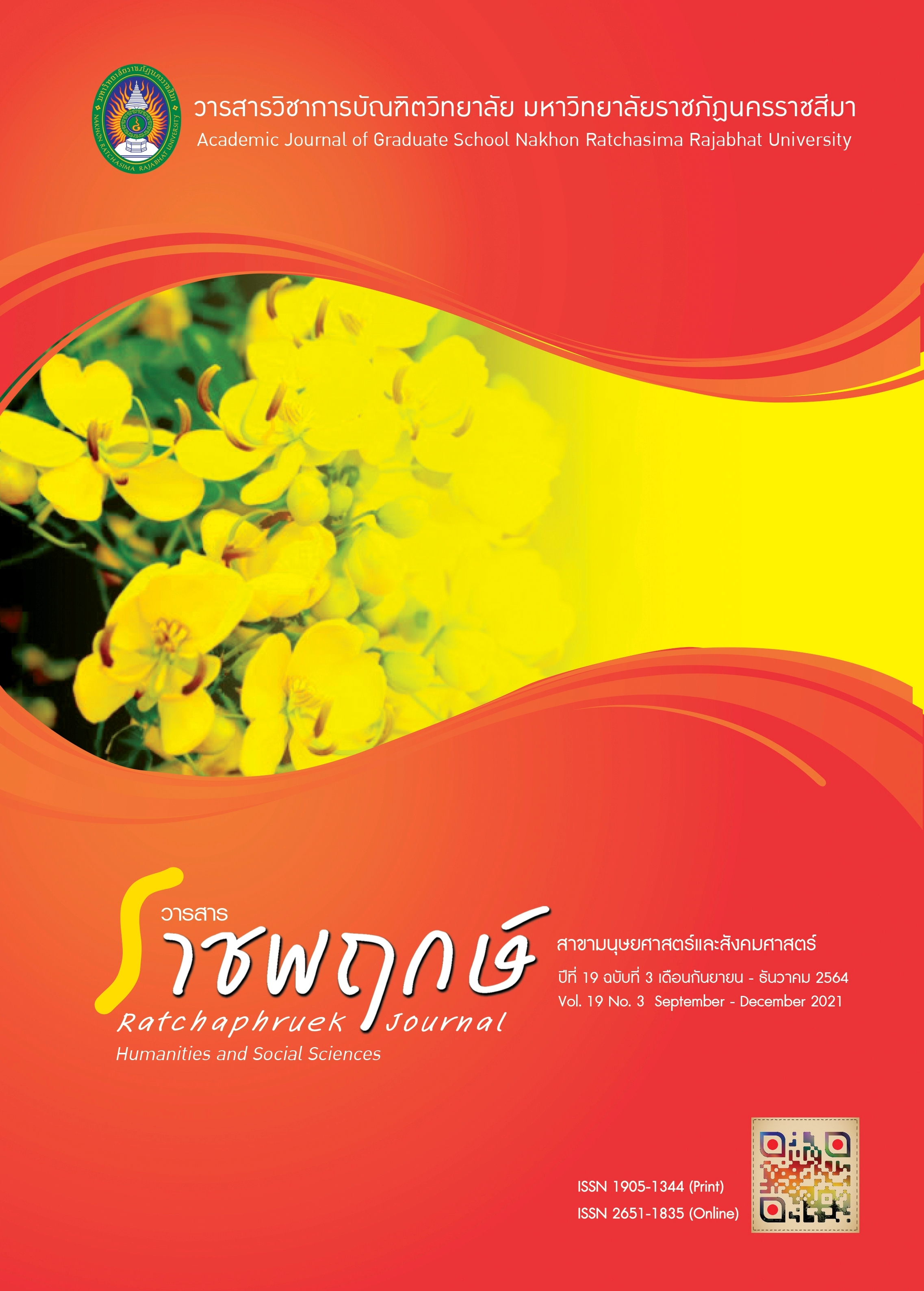Creative Leadership of the Head of Child Development Centers Affecting the Operational Effectiveness of Child Development Centers in Nakhon Phanom Province
Main Article Content
Abstract
This research aimed to: 1) Examine the creative leadership levels of the head of the child development centers; 2) Examine the operational effectiveness levels of the child development centers; 3) Investigate the relationship between creative leadership of the head of child development centers and the operational effectiveness of the child development centers; 4) Examine the predictive power in creative leadership of the head of the child development centers that affected the operational effectiveness of the child development centers; and 5) Propose guidelines to develop creative leadership for the head of child development centers that affected the operational effectiveness of the child development centers. The sample were comprised of 307 participants: The directors of Education Religion and Culture Division, Educators, Heads of child development centers, and Child care teachers in Nakhon Phanom Province. The research instruments were 5-rating scale questionnaires. Data were were analyzed by frequency, percentage, mean, standard deviation, Pearson product-moment correlation, stepwise multiple regression analysis.
The findings were revealed that the creative leadership level of the head of the child development centers in overall and each aspect and the operational effectiveness level of the child development centers in overall and each aspect were at the high level. The creative leadership of the head of the child development centers and the operational effectiveness of the child development centers obtained high level of positive correlation with statistical significance at .01. The creative leadership of the head of child development centers in problem solving, flexibility and imagination predicted the operational effectiveness of the child development centers (Y)with statistical significance at the .01. Problem solving development, flexibility development and imagination development were the guidelines of the creative leadership development for the head of child development centers.
Article Details
References
ขอนแก่น. วารสารมหาวิทยาลัยมหามกุฎราชวิทยาลัย วิทยาเขตร้อยเอ็ด, 8(2), 229-241.
กิตติ์กาญจน์ ปฏิพันธ์. (2555). โมเดลสมการโครงสร้างภาวะผู้นำเชิงสร้างสรรค์ของผู้บริหารสถานศึกษาอาชีวศึกษา. วิทยานิพนธ์ ปร.ด. ขอนแก่น: มหาวิทยาลัยขอนแก่น.
เตชินณ์ อินทบำรุง (2560). ความสัมพันธ์ระหว่างภาวะผู้นำเชิงสร้างสรรค์ของผู้บริหารสถานศึกษากับประสิทธิผลของโรงเรียนตามการรับรู้ของครู สังกัดสำนักงานเขตพื้นที่
การศึกษา ประถมศึกษาสุราษฎร์ธานี เขต 2. วารสารนาคบุตรปริทรรศน์ มหาวิทยาลัยราชภัฏนครศรีธรรมราช, 11(1), 178-187.
ปิยะมาศ อัมมะพะ. (2557). ความสัมพันธ์ระหว่างภาวะผู้นำการเปลี่ยนแปลงของนักบริหารการศึกษากับประสิทธิผลศูนย์พัฒนาเด็กเล็ก สังกัดองค์กรปกครองส่วนท้องถิ่น
ในจังหวัดอุดรธานี. วิทยานิพนธ์ ค.ม. อุดรธานี: มหาวิทยาลัยราชภัฏอุดรธานี.
“พระราชบัญญัติการศึกษาแห่งชาติ,” ราชกิจจานุเบกษา. เล่มที่ 116 ตอนที่ 74 ก. หน้า 1-23.16 สิงหาคม 2542.
โพสต์ทูเดย. (2559). พระมหากษัตริย์ผู้ยิ่งใหญ่: ประทีบแห่งการศึกษา. เข้าถึงได้จาก https : //www.posttoday.com/kingbhumibol/thebelovedking/8
9 สิงหาคม 2563.
“รัฐธรรมนูญแห่งราชอาณาจักรไทย,” ราชกิจจานุเบกษา. เล่ม 134 ตอนที่ 40 ก. 6 เมษายน 2562.
วาโร เพ็งสวัสดิ์. (2551). วิธีวิทยาการวิจัย. กรุงเทพฯ: สุรีวิยาสาส์น.
สมจิตร ชูศรีสาสและหทัย น้อยสมบติ. (2562). ภาวะผู้นำเชิงสร้างสรรค์ของผู้บริหารสถานศึกษาที่ส่งผลต่อประสิทธิผลของโรงเรียนสังกัดสำนักงานเขตพื้นที่การศึกษา
ประถมศึกษากาฬสินธุ์ เขต 1. วารสารมนุษยศาสตร์และสังคมศาสตร์ มหาวิทยาลัยนครพนม. 9(3), 53-61.


